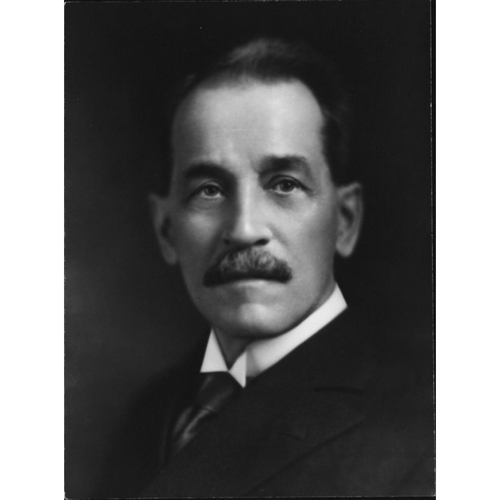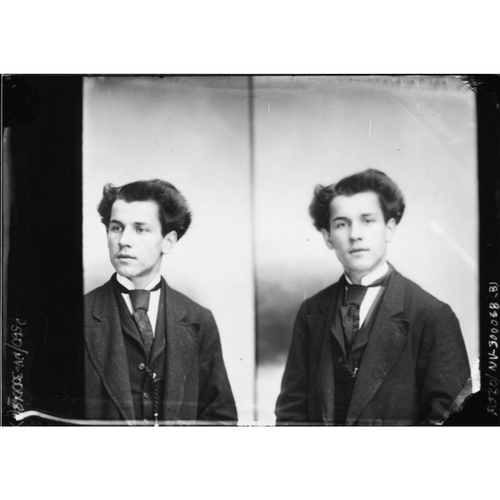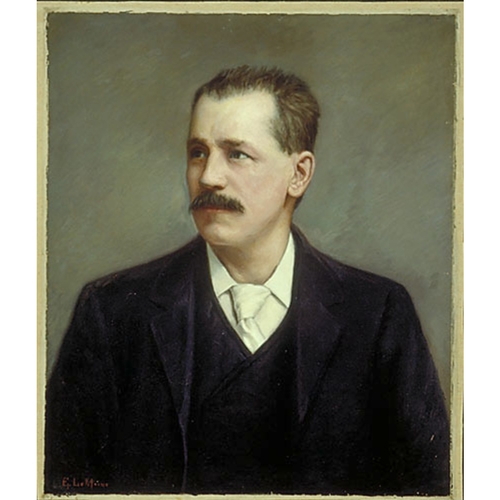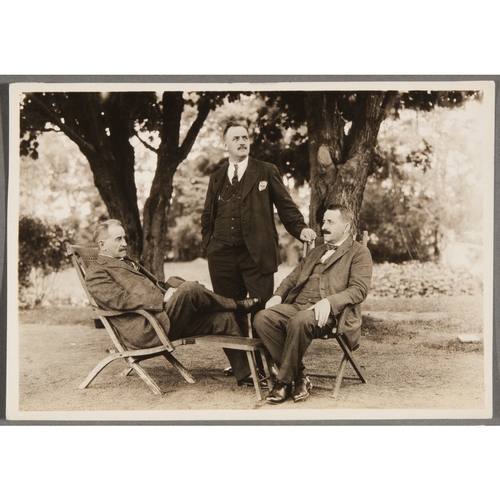![Jules-Ernest Livernois [vers 1890] P560,S2,D1,P1666 – Fonds J. E. Livernois Ltée - BAnQ Québec Original title: Jules-Ernest Livernois [vers 1890] P560,S2,D1,P1666 – Fonds J. E. Livernois Ltée - BAnQ Québec](/bioimages/w600.13646.jpg)
Source: Link
LIVERNOIS, JULES-ERNEST (baptized Jules-Ernesse-Edmond), photographer and businessman; b. 19 Aug. 1851 in Saint-Zéphirin-de-Courval, Lower Canada, eldest son of Jules-Isaïe Benoît*, dit Livernois, a merchant, and Élise L’Herault, dit L’Heureux; m. first 15 Aug. 1876 Maria Laroque (d. 22 Sept. 1880) in Quebec City, and they had a son and a daughter; m. there secondly 28 Sept. 1882 Marie-Louise La Roque (d. 25 Feb. 1887), sister of his first wife; marriage annulled “following an invalidating bar to the union of consanguinity of the third or fourth degree” and then reinstated there on 19 June 1883 after the required dispensation had been obtained; they had three sons, only one of whom reached adulthood; d. 8 June 1933 in Quebec City and was buried there four days later in Saint-Charles cemetery.
For almost 100 years three generations of the Livernois family dominated the art, practice, and business of photography in Quebec City. From 1854 to 1865 the firm was led by the founder, Jules-Isaïe Benoît, dit Livernois, and from 1866 to 1873 by his widow Élise L’Herault, dit L’Heureux, and her son-in-law Louis Bienvenu. Jules-Ernest Livernois, the son of Jules-Isaïe and Élise, later took over the enterprise. In 1898 his son Jules assumed Jules-Ernest’s responsibilities for photography and, in all likelihood, the management of the business after the death of the latter.
Jules-Ernest learned the basics of reading and writing from his mother and then received his elementary education in a small school in Quebec City. From an early age, the eldest son of the second generation was immersed in the world of photography. After his father’s premature death in 1865, he had to help his mother pursue the family’s commercial activities while, at the same time, contributing to the support of his brother and four sisters.
The firm of Livernois et Bienvenu, based at 3 Rue Saint-Jean, was the most renowned photography studio in Quebec City by the beginning of the 1870s. In April 1873 a new company name, Livernois, Bienvenu et Compagnie, incorporated Jules-Ernest, then aged 21. The following summer Jules-Ernest travelled east to photograph “all the places that offer some interest to foreigners,” as was reported in the Journal de Québec of 19 July, including the Gaspé region, Shediac, New Brunswick, and Pictou, Nova Scotia. The partnership of the three ended in December, with Jules-Ernest promising to pay its debts. From then on Jules-Ernest took over the family firm, which was in financial trouble but was nevertheless equipped with an impressive inventory.
From 1876 Livernois managed a studio at 9 Rue Saint-Jean, close to Quebec City’s principal sites of religious and civil power. At the outset he hired his cousin Émile Pelchat, an experienced photographer, as administrator and later made him manager. Over the course of his years as head of the company, he was able to employ a staff of between 8 and 12 assigned to various tasks as well as several specialized contract workers, and he had an ongoing interest in improving his studio and equipment to keep abreast of technical innovation.
By dint of the quality and the quantity of his work, Livernois dominated the photography business in Quebec from 1874 to 1898, reaping fame and fortune. He was a firm believer in both the ultramontane and progressive ideology of the day. He maintained special relationships with the city’s elite, who obtained for him a wide variety of commissions for which he produced images of all types and in all formats. Although portraits comprised the bulk of his output, the artist provided an invaluable visual record of the life and evolution of Quebec society in the last quarter of the 19th century. He was the first to introduce a large number of themes related to current affairs, colourful events, and recreational activities: the tragic or festive happenings of the capital; vacations at the waterside resorts and grand holiday hotels of Charlevoix and the Lower St Lawrence; the Huron chiefs of Jeune-Lorette (Wendake) in full regalia; regional development and the building of the Quebec and Lake Saint John Railway; picturesque views of maritime and farming villages; major construction projects (public buildings, bridges, ships); the wild, majestic scenery around Quebec City and the backcountry with its forests, rivers, lakes, and waterfalls; the architecture and day-to-day activities of hospitals and educational institutions; and winter activities.
The studio took on average 2,000 portraits a year: groups and individuals, head-and-shoulders, medallions, or full-length, in a trompe l’œil setting, sometimes arranged together in a hierarchical mosaic. While the master reserved national celebrities and distinguished visitors for himself, he entrusted regular clients to skilful technicians. As an accredited photographer to the most reputable educational institutions of the capital, including the Ursuline convent, the Séminaire de Québec, and the Université Laval, Livernois supplied, for example, innumerable portraits of religious figures, students and graduates, classes, school reunions, sports teams, theatre companies, orchestras, and music societies.
In October 1874, as part of the bicentenary of the archdiocese of Quebec, the J. E. Livernois firm offered for sale the mosaic Le Pape Pie IX et l’épiscopat de la puissance, which depicted 23 of the country’s prelates and more than 100 priests grouped around Pius IX. On 1 Jan. 1877 the Livernois studio was engulfed in flames, but all the negatives were saved. The modernized studio reopened at the beginning of February. In April the firm produced 1,100 photographs of members of the Canadian clergy and of churches and other religious buildings for an album that was presented to Pius IX on the occasion of the 50th anniversary of his episcopate. That summer the Quebec Harbour Commission and the provincial Department of Agriculture and Public Works put Livernois in charge of photographing the development and activity of the port of Quebec City and the Lévis shipyards, as well as the construction of the legislative building [see Eugène-Étienne Taché*]. Some of his prints of the Quebec port would later be presented by the Quebec Harbour Commission to the Colonial and Indian Exhibition, which was held in London in 1886. Livernois also undertook to capture the main viewpoints around Quebec City, including the villas, with the intention of illustrating Picturesque Quebec, a work to be published the following winter. In June 1879 he submitted an album of portraits and landscapes to an art exhibition mounted at the Pavillon des Patineurs in honour of the previous governor general, Lord Dufferin [Blackwood*], and for the Canadian Illustrated News and L’Opinion publique of Montreal he covered the inauguration of the Dufferin Terrace, which was presided over by the new governor general, the Marquis de Lorne [Campbell*], and Princess Louise. He also published an engraved panorama of Quebec City in the Canadian Illustrated News of 12 July.
Sporting a large moustache and possessing great presence, a noble demeanour, and a wide forehead, Livernois was a congenial individual, renowned for his elegance, courtesy, and good manners. He was a prosperous businessman and an affable and attentive father who, during this period, led a well-ordered domestic life, albeit one punctuated by the deaths of several family members. By 1880 he had already lost all his sisters, who were struck down in the prime of life. He was twice a widower in less than seven years: first when Maria Laroque died in 1880 at the age of 23 and then when Marie-Louise La Roque died in 1887 at the age of 28. He never married again.
Owing to the accelerated development of some regions between 1875 and 1895, particularly the Laurentians, the Mauricie, and especially Lac-Saint-Jean, new railways were required to link these areas to Quebec City. Livernois profited from this activity, obtaining lucrative contracts from the Department of Public Works and from private enterprise, such as the Quebec and Saint John Railway. Photography for documentary and advertising purposes was part of an international trend among rapidly growing railway companies.
In 1878 Livernois prepared a high-quality collection on the Chemin de fer du gouvernement, province de Québec …, consisting of 13 large-format prints that would be presented to the lieutenant governor of the province of Quebec, Théodore Robitaille*. That summer the Department of Agriculture and Public Works sent to the Paris universal exposition two albums showing Quebec’s railway construction sites (lines, bridges, and stations), for which Livernois won an honourable mention as photographer. In September 1888 he covered the inauguration by Premier Honoré Mercier* (who had become a close friend) of new connections between Rivière-à-Pierre-Station (Rivière-à-Pierre) and Lac Bouchette, and then in June 1889, for Montreal’s Dominion Illustrated, the opening of the section between Roberval and Chicoutimi (Saguenay). He took this opportunity to capture the beauty of the natural scenery of Lac-Saint-Jean. His photographs would serve to showcase these remote areas to city dwellers who were tempted to settle in the United States. In keeping with the ideological, economic, and social imperatives of the day, his Laurentian landscapes and scenes depicting rural life were used in various prospectuses, books, and periodicals to support a colonization propaganda campaign. His shots began to appear regularly in Dominion Illustrated (some 20 prints) from 1889 and in Montreal’s Le Monde illustré (8) from 1890, the year Arthur Buies* also included some of them in La Région du lac Saint-Jean, grenier de la province de Québec … (14), published in Quebec City (released in 1891 in the same city as The Lake Saint-Jean region: the granary of the province of Quebec). Soon after, his photographic reports also illustrated brochures promoting fishing and hunting paradises.
The appearance of cameras that were easier to handle, dry plates, and silver gelatin prints revolutionized photographic practices and business. Compared with earlier processes, industrial dry plates were faster and simpler to use, especially for outdoor work, and gelatin prints were, among other things, more durable.
Consequently, Livernois’s studio had to adopt new ways of operating and diversify its activities. From 1881, for example, he offered framing services. In 1883, as reported in the Quebec City weekly Le Canadien on 30 April, Livernois took “four magnificent [group] photographs” of all the elected members and legislative councillors as well as an interior view of the Legislative Assembly. In 1886 the studio took the official portraits of Cardinal Elzéar-Alexandre Taschereau* in a trompe l’œil setting painted by the famous New York artist Lafayette W. Seavey. Livernois also covered temporary structures and grandiose ceremonies surrounding the consecration of the new prelate. In September of the following year, he exhibited a colour version of one of these full-length portraits at the Quebec provincial exhibition.
In 1888 Livernois took photos of the ruins of the burned-out chapel of the Séminaire de Québec and also produced a large photomontage comprising portraits of all the members of the secular clergy in the archdiocese of Quebec; he registered the copyright for this work and presented it to Taschereau. In addition to producing various panoramic images and individual or group portraits, the following year he prepared news reports with sensational pictures for Dominion Illustrated: first he featured the Saint-Sauveur (Quebec) fire and the funeral of Major Charles John Short, who died a hero in the disaster, and then the mustering of the 8th Royal Rifles on the Plains of Abraham, and finally the landslide at Cap Diamant. On 26 October Le Canadien offered free to its subscribers one of five portraits of outstanding political personalities taken by the firm of J. E. Livernois, “whose reputation is well established.” During this period Livernois contributed what would become a well-known photo of Honoré Mercier, in winter attire, to the illustrated volume Les Hommes du jour : galerie de portraits contemporains, published two tourist brochures – one on the route between Quebec City and Sainte-Anne-de-Beaupré, and the other on the latter, a famous place of pilgrimage – and registered the copyright for the images of the devotion to Sainte Anne.
In 1889, when his business was at its peak, with annual revenues of over $16,000, Livernois established premises at a central, strategic address in the upper town, at the intersection of the Rues Saint-Jean, Couillard, de la Fabrique (côte de la Fabrique), and Garneau. In this imposing building, which could be seen from the Saint-Jean gate, the photographer set up the most sophisticated studio in the capital. The building in which he was a tenant included, among other things, an elegant art gallery, a portrait studio with a large bay on the northeast side, and a solar print-developing room in the attic, featuring a skylight to the southwest. He started selling chemicals and cameras and published his first price list.
The firm continued to provide group portraits and photo reportage, including, in 1891, the image of the members of the Provincial Board of Notaries, and that of the commissioners and spectators at the royal commission of enquiry into the Baie des Chaleurs Railway matter [see Honoré Mercier; Ernest Pacaud*]. In 1892 the company acquired the iconic building with which the family’s name was still associated at the beginning of the 21st century. Livernois ran a wholesale and retail shop. He sold and rented cameras, accessories, and other photographic articles and chemicals, including the famous portable Kodak camera, manufactured by the Eastman Kodak Company and accessible to amateurs, who were subsequently to compete with professionals. The following year he expanded his business with the addition of retail pharmaceutical products. Despite the fact that he had hired the pharmacist Léandre Renaud, there was a virulent response from the Pharmaceutical Association of the Province of Quebec, partly because of the low prices of prepared medications from Europe and the United States. Livernois, however, emerged unscathed, and even victorious, since the profits from the sale of these products were gradually to supplant those from the studios.
In August 1893 Lord Stanley*, at the end of his term as governor general, called upon the firm of J. E. Livernois to take his portrait and that of his wife, Lady Constance Villiers; as the Quebec City newspaper Le Courrier du Canada reported on 7 Aug. 1893, the photographer wanted to leave behind “a rich artistic keepsake for our Canadian leading lights.” On 19 September the city’s Électeur mentioned that Livernois, “who represented various American and Canadian illustrated journals,” had the previous day photographed the swearing-in of Lord Aberdeen [Hamilton-Gordon] as the new governor general; he had also taken his portrait and that of his wife, Lady Aberdeen [Marjoribanks], in his studio as well as a group portrait of the vice-regal party at the Citadel.
Jules, the eldest son of Jules-Ernest and Maria, entered the studio as a photographer in 1893. It was announced that views of the capital taken by the Livernois would be shown at the Columbian Exposition in Chicago that year. In early 1894 the firm captured the structures and festivities surrounding the first Quebec winter carnival [see Frank Carrel]. During that same period the firm produced, with a New York publisher, a series of illustrated booklets of photo engravings of the capital, including Quebec illustrated in photo-gravure (1894) and Quebec of to-day: photo-gravures (1897), as well as advertising catalogues that contained a list of subjects and prices (Views of Quebec and environs …, for example, which appeared in Quebec City in 1896, featured almost 700 titles).
In 1897 Jules-Ernest conducted an exhaustive inventory of his firm, and the following year he relinquished photography activity to his son Jules. The company was incorporated in 1909 as J. E. Livernois, Limitée, with a total capital of $300,000. Livernois senior apparently assumed the management of the business until his death. Wealthy and fulfilled, he enjoyed a peaceful existence with his family in his sumptuous residence on Rue Sainte-Ursule and his luxurious summer villa in Petite-Rivière-Saint-Charles (Quebec) before his death in 1933 following an angina attack in Quebec City at the age of 81.
J. E. Livernois, Limitée celebrated its 80th anniversary in grand fashion the following year and its 100th in 1954, but found itself without a family successor to the business (Jules had died in 1952). Ten years later it was no longer financially self-sustaining, owing to stiff competition and the loss of customers. In 1974 it closed the studio before declaring bankruptcy at the beginning of 1979. In the summer of 1987 the Musée du Québec devoted a major retrospective to the Livernois family, accompanied by an extensive catalogue. The exhibition was organized by historian Michel Lessard.
Jules-Ernest Livernois ran, without a doubt, the best-known francophone studio in the province of Quebec in the last quarter of the 19th century. Unlike his contemporaries, who were drawn more to picturesque locales, Livernois turned a fresh, dynamic, modern, even avant-garde eye on the old capital while not neglecting the local and tourist clientele. Many of his shots are of construction and buildings in Quebec City that no longer exist, therefore constituting valuable records in the history of architecture. Some magnificent landscapes are skilfully composed and approach the sublime; some of them do not suffer in comparison with those of the photographers Alexander Henderson* and William Notman* of Montreal. An important testimony to the material culture of the day, the photographic reportage and superb interior views of various religious establishments are of exceptional interest and are surprising in their unusual subject matter, their well-thought-out organization, and their aesthetic quality, which is achieved in some cases through the very successful effect of natural light and in others through the play of perspective bordering on abstraction. Several may even be included among the masterpieces of the history of photography in Canada. In the words of his great friend Arthur Buies in 1887, Jules-Ernest Livernois was “the most artistic of photographers.”
The J. E. Livernois Ltée fonds (P560), BANQ, has 2.6 linear metres of textual records and close to 110,000 of Jules-Ernest Livernois’s photographs. The database “Artefacts Canada,” available at app.pch.gc.ca/application/artefacts_hum/indice_index.app?lang=en, contains thousands of images. Important collections of the subject’s work can be found at LAC (including 1,824 photographs in the Jules-Ernest Livernois coll., R670-0-2), the Musée de la Civilisation de Québec (2,602 items in the Coll. du Séminaire de Québec), the Musée National des Beaux-Arts du Québec (Quebec) (mainly among the donations made by Yves Beauregard and Michel Lessard), BANQ-CAM, BANQ-SLSJ, the AVQ, and the Arch. de l’Archidiocèse de Québec. Some of his images are held by religious communities in the Quebec City region, including the Ursulines, the Augustines de la Miséricorde de Jésus, the Sœurs de la Charité de Québec, and the Redemptorists. Livernois was the subject of a film titled Ernest Livernois, photographe, directed by Arthur Lamothe in 1988, and of a stamp issued by Canada Post the following year.
Thanks to Michel Lessard’s doctoral thesis, “Le Studio Livernois, 1854–1974: un commerce familial d’art photographique à Québec” (submitted at the Univ. Laval in 1986), and his numerous publications from the 1980s, including the catalogue, Les Livernois, photographes, for 1987 exhibition at the Musée du Québec in Quebec City. The careers and work of this family of photographers, particularly those of Jules-Ernest, are well known. The thesis and the catalogue both contain detailed bibliographies, and the following list gives only the principal publications written since 1987.
The author’s research primarily involved updating the sources cited by Lessard. In addition, at the Musée National des Beaux-Arts du Québec, he compiled important research files for each member of the Livernois family. These contain several unpublished materials, such as an exhaustive study of Quebec newspapers that were consulted during the writing of this biography. BANQ-MCQ, CE403-S16, 19 août 1851.
BANQ-Q, CE301-S1, 15 août 1876, 28 sept. 1882, 19 juin 1883; CE301-S22, 24 sept. 1880, 28 févr. 1887. FD, Cimetière Saint-Charles (Québec), 12 juin 1933. J.‑L. Allard et Jacques Poitras, Les photographes québécois (1839–1950): la première liste officielle (Longueuil, Québec, 2006). Mario Béland, “La dynastie Livernois,” Continuité (Québec), 122 (automne 2009): 39–44; “Edith Hemming, au service des Livernois,” Cap-aux-Diamants (Québec), no.96 (2009): 51; “Les Livernois chez les ursulines de Québec,” Cap-aux-Diamants, no.123 (automne 2015): 47; Québec et ses photographes, 1850–1908: la collection Yves Beauregard (catalogue d’exposition, Musée National des Beaux-Arts du Québec, 2008); “Une ‘star’ du clergé Québécois,” Cap-aux-Diamants, no.90 (été 2007): 53. Arthur Buies, Sur le parcours du chemin de fer du lac St-Jean : 2ème conférence faite à la salle St-Patrick, le 28 avril 1887 (Québec, 1887). Cap-aux-Diamants, 3 (1987–88), no.2, numéro spécial intitulé 150 ans de photographie: images oubliées de la capitale; no.33 (printemps 1993), numéro spécial intitulé Ah! Les belles vacances! Karel, Dict. des artistes. Michel Lessard, La photo s’expose: 150 ans de photographie à Québec ([Québec?, 1987?]); Québec, ville du patrimoine mondial: images oubliées de la vie quotidienne, 1858–1914 ([Montréal], 1992). Michel Lessard et al., Québec éternelle: promenade photographique dans l’âme d’un pays (Montréal, 2013). Men of the day: a Canadian portrait gallery, ed. L.‑H. Taché (32 ser. in 16v., Montreal, 1890–[94]). Zoë Tousignant, “Jules-Ernest Livernois: le regard moderne d’un photographe,” dans Québec, une ville et ses artistes, sous la dir. de Denis Castonguay et Yves Lacasse (catalogue d’exposition, Musée National des Beaux-Arts du Québec, 2008), 202–13.
Cite This Article
Mario Béland, “LIVERNOIS, JULES-ERNEST (baptized Jules-Ernesse-Edmond),” in Dictionary of Canadian Biography, vol. 16, University of Toronto/Université Laval, 2003–, accessed November 20, 2024, https://www.biographi.ca/en/bio/livernois_jules_ernest_16E.html.
The citation above shows the format for footnotes and endnotes according to the Chicago manual of style (16th edition). Information to be used in other citation formats:
| Permalink: | https://www.biographi.ca/en/bio/livernois_jules_ernest_16E.html |
| Author of Article: | Mario Béland |
| Title of Article: | LIVERNOIS, JULES-ERNEST (baptized Jules-Ernesse-Edmond) |
| Publication Name: | Dictionary of Canadian Biography, vol. 16 |
| Publisher: | University of Toronto/Université Laval |
| Year of publication: | 2021 |
| Year of revision: | 2021 |
| Access Date: | November 20, 2024 |






